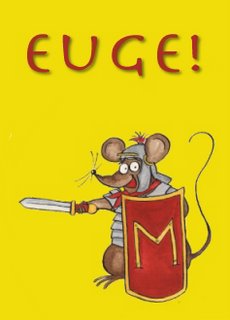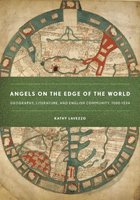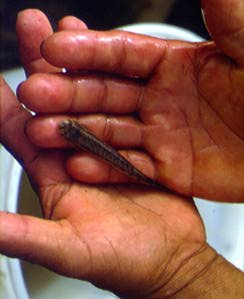
Since so many people find this blog as they search the web trying to discover more about postcolonial theory, I offer the following: an excerpt from "Postcolonial Theory," published as part of
Chaucer: An Oxford Guide ed. Steven Ellis (Oxford: Oxford University Press, 2004) 448-62. The fuller version contains sections on "Postcolonial London," "Chaucer as Island Writer," "Chaucer's Orientalism," and "Remembrance and Loss" (the last is about the Prioress's Tale and murdered children, Christian and Jewish alike).
Postcolonial CriticismPostcolonial criticism explores those contact zones where multiple cultures clash, compete, coexist. Its analyses are, in the words of one highly regarded practitioner, predicated upon the critical examination of "the unequal and uneven forces of cultural representation involved in the contest for political and social authority" (Homi Bhabha,
Location of Culture). Postcolonial critique emphasizes the heterogeneity of cultures, their commingling of differences in history, language, creed, custom, desire. Without a great deal of violence such differences cannot be assimilated into a uniform whole. Postcolonial critique aims to restore to the world its multiplicity, its pluralism, often by exploring minority histories that have been obscured. Although medievalists have only recently begun to cite postcolonial criticism explicitly in their work, its concerns have long been evident in their research.
Postcolonial PracticeThe postcolonial criticism most widely influential in the academy derives mainly from the study of English imperialism; Europe's enduring fantasies of the east (christened Orientalism by Edward Said); and the decolonization of former French possessions. South Asia has received the most attention in the United States and England. Yet the intellectual genealogy of postcolonial critique spans the inhabited continents and addresses a vast array of cultures and histories, from the Caribbean and Latin America to Africa, Canada, Australia, and the United States. Postcolonial critique is connected to ethnic, race and area studies, as well as to feminism, disability studies and cultural materialism, not least because all these schools demonstrate an abiding concern with the excluded and disempowered. Postcolonial criticism evinces a deep sense of social justice. The world is assumed to be utterly messy and protean, a state of impure being described variously as creolization, doubleness, mesitizaje, metissage or hybridity. Attempts to sort and organize this turbulence more often than not reveal a desire to contain, degrade, and colonize whatever is perceived as foreign and threatening. Distrustful of official accounts of history, postcolonial criticism turns to the past in order to discover the contingencies that have formed the present.
Canonical ChaucerPostcolonial critics cast a suspicious eye upon the claim that some few texts should be revered simply because they are part of a self-evident register of Great Works, and are interested in who gets left out from such lists. Some foundational scholarship in postcolonial theory ties education intimately to the aims of empire, especially when native or minority knowledges are denigrated so that the English language and Christian religion can be promulgated as universals. What worldview is being imbued as part of the educational process? Does imbuing an awe for Anglophone culture imply an inherent superiority? When a fourteenth-century poet like Chaucer is widely studied while contemporary authors writing in Scotland, Ireland, and Wales (or writing within England in, say, Hebrew) are not, are imperialistic objectives being silently reaffirmed?
That pedagogical traditions do change – and change radically – is obvious from a glance at Chaucer's education. He did not grow up reading classic English literature, for the simple reason that there wasn't any. For the educated class to which he belonged literacy meant Latinity, since Latin was the international language for keeping records, composing official documents, recording history, and reading authoritative literary classics. To go to school was to be disciplined into a discourse shared by a powerful masculine elite, bestowing prestige and cultural capital upon those in its possession. At court Chaucer would have spoken the Anglo-Norman dialect of French, an enduring inheritance from William's conquest of the realm. A colonizer's language, French had by Chaucer's day become a marker of social class rather than of ethnic difference. Chaucer probably wrote his first poetry in this elite tongue, but that did not render his relation to French and France any less ambivalent. He knew all too well the ebbs and flows of violence between England and its continental neighbor, not least because in 1359 he was captured while part of an invasion force. Chaucer never mentions the French presence in English history. The 'Man of Law's Tale' is set in the Anglo-Saxon past of the land; even though its narrator knows all the legal judgments from 'the tyme of kyng William' (GP 324) nowhere in this work or in any other does Chaucer mention the Norman Conquest. Yet although Chaucer likely conversed with his own parents in English, the language that he spoke with his wife (raised in the English court but of Hainault origin) and probably children was French.
In rejecting French as a literary vehicle Chaucer rejected the history that had previously made French both elite and prestigious. In deciding to write as if English were already a tongue that could bestow the same immortality on an insular author that Latin had given to Virgil, Chaucer undercut the classical tradition that had formed the core of his education, had formed him. The breathtaking panache of the words with which he closes his courtly poem Troilus and Criseyde can be appreciated only with this radical departure in mind:
Go, litel bok, go litel myn tragedye ...
And kis the steppes where as thow seest pace
Virgile, Ovide, Omer, Lucan, and Stace. (5. 1786-92)
Chaucer had reaped economic benefits from his knowledge of Latin, but through works like the Canterbury Tales he also sabotaged that classical tradition, stealing some of its status to bestow upon a vernacular that had for the past three centuries not seemed capable of being literary. Chaucer transformed a subaltern language into a readable one.
Given that Chaucer mastered a tradition only to reject its foundational claim to exclusivity, it is ironic that he should be regarded as the most canonical of authors. Chaucer's fifteenth-century followers, poets like Hoccleve and Lydgate, happily discovered in him a founding father whose sophisticated English they could harness to their own nationalistic aspirations. The problem with the doctrine of Chaucer's supreme Englishness, so popular during the Age of Empire, is that it has little basis in Chaucer's literary record. Although the frame of the
Canterbury Tales unfolds in England, it does not seem 'a place for which we are encouraged to feel a particular affection, as a beloved land or heritage-site' (Derek Pearsall, 'Chaucer and Englishness'). Even the Canterbury Pilgrims are, on the whole, a motley and unidealized group.
Postcolonial criticism holds that writers and texts ought to be seen as part of history, not as transcending it. What this means in practical terms for the contemporary study of Chaucer is that it is often necessary for a disenchantment to be performed, rather like the clap in the 'Franklin's Tale' that dispels the visions of swirling 'revel' from the room to allow other, more quotidian kinds of magic to proceed (1203-4). Chaucer was a medieval poet, a limited and fallible human being. His works call into being an intoxicatingly imperfect series of worlds. It is difficult to reduce these wide expanses to a jingoistic paean or harness them to some xenophobic nationalism, though that never stopped later writers from trying.
The Medieval and the PostcolonialPostcolonial critique is fundamentally about refusing to judge the non-Western and the non-modern by contemporary Eurocentric standards. 'The problem of getting beyond Eurocentric histories,' Dipesh Chakrabarty has observed, 'remains a shared problem across geographic boundaries' (
Provincializing Europe). Isn't it somewhat perverse to find an entry for postcolonial criticism neatly tucked into an undertaking as official, Eurocentric and Anglophilic as an Oxford guide to Chaucer, founding father of the English literary tradition? Yet I wonder if such labels as 'Eurocentric' should be hurled so cavalierly at the Middle Ages, especially given that neither Europe nor England existed as the unified entities we now imagine are designated by the words. Neither Europe nor England are timeless; nor are they the inevitable culmination of evolutionary processes, as if they were modernity itself. They are, in other words, one or two centers among many others, composed in turn of multiple centers of their own.
The historian Robert Bartlett has written at great length of how Europe had to 'Europeanize' itself in order to be able to imagine a kind of transnational community (
The Making of Europe). This long and not unresisted process of internal harmonization meant that peoples finding themselves suddenly annexed to expanding realms had to give up their 'barbarous' ways, had to learn (in Uppinder Mehan's words) that they inhabited 'the margin of someone else's center' (''Nation' and the Gaze of the Other in Eighth-Century Northumbria'). Mediterranean culture displaced and absorbed other modes of being; the West slowly Latinized. England was meanwhile involved in a process of self-colonization, anglicizing its inhabitants in an effort to produce a nation united in culture, custom, and ardor. The once-circumscribed kingdom of England ambitiously began to imagine itself as coterminous with the British Isles, thereby appropriating more and more of the land to itself.
Postcolonial critique tends to concentrate on the 'middle spaces' which open up when a dominant culture's demand to recenter the world around itself is resisted. When London is granted no primacy over Dublin, Norwich or Cornwall, when Rome (or sometimes, in Chaucer's day, Avignon) is accorded no innate superiority over local shrines and 'provincial' rituals (or over Constantinople, Cairo, Beijing), the world begins to spin along multiple axes, the music of the spheres is traded for a noise that cannot be anticipated in advance. This conceptualization eliminates the binarism between subordinated peripheries and dominating metropoles, offering a multiplicity of centers instead. It also checks the tendency to think of that which is located at some important center as being more advanced, while that at the supposed fringe is primitive, uncouth. An ambition of postcolonial theory is to grant to all cultures a coevalness, a temporal equality that disallows careless labels like 'backward' and 'undeveloped.'













